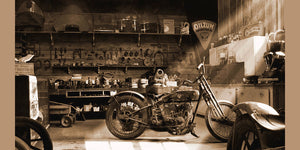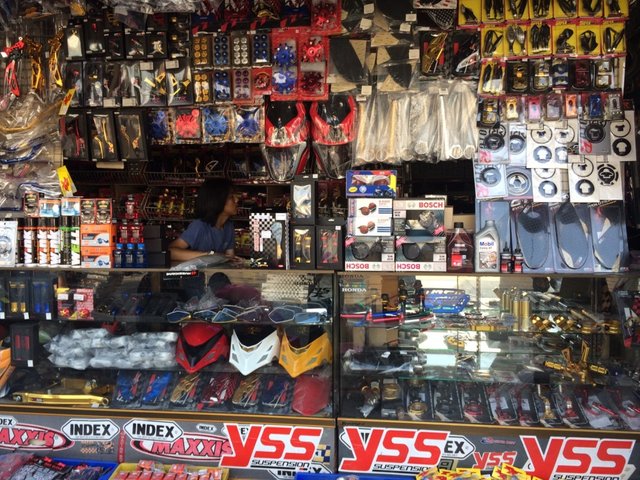Must-Have Motocross Gear: Raise Your Riding Experience Today
Must-Have Motocross Gear: Raise Your Riding Experience Today
Blog Article
Recognizing the Crucial Parts of a Motorcycle: A Comprehensive Overview for Fanatics
For motorbike enthusiasts aiming to raise their riding experience and ensure their bikes run efficiently, understanding the necessary parts of a motorcycle is paramount. Each component, from the engine's intricate workings to the essential function of the braking mechanisms, not only affects efficiency yet additionally safety and security and convenience. This overview will walk through the fundamental components that every cyclist need to know with, allowing notified choices in both upkeep and possible upgrades. As we begin this exploration, one must ask: how does each part connect to produce the seamless trip every enthusiast looks for?
Engine Components

The camshaft plays a crucial function in managing the timing of the engine's shutoffs, making certain the precise opening and closing required for effective gas and air consumption, along with exhaust expulsion. This timing is critical to maintaining optimal engine performance and efficiency. Furthermore, the carburetor or fuel injection system, depending upon the bike version, is accountable for blending air with fuel in the appropriate proportion for burning.
The cooling system, either air or liquid-based, works to maintain the engine's temperature level within functional limits, avoiding getting too hot and guaranteeing durability - motocross parts nz. Each element, meticulously developed and incorporated, adds to the smooth operation of the engine, defining the motorbike's power output and total efficiency
Transmission System
Important to the bike's capability, the transmission system makes certain reliable power transfer from the engine to the wheels. This system makes up several vital elements, including the clutch, transmission, and final drive, each playing an important role in converting the engine's power right into movement. The clutch, typically run by a hand bar, serves to involve and disengage the engine from the transmission, enabling smooth equipment modifications and controlled velocity.
The gearbox, typically referred to as the transmission appropriate, includes a set of gears that bikers can by hand change through to adjust the bike's speed and torque outcome. These gears are set up in a series that enables the motorcycle to accelerate smoothly and maintain optimum engine efficiency across numerous speeds. The majority of motorbikes make use of a sequential transmission, needing the biker to change gears in a fixed order.
Braking Systems
While recognizing the transmission system is essential to harnessing a motorbike's power, just as essential is the capacity to control and stop that power effectively, which is where stopping devices enter into play. Brakes are crucial for security and efficiency, offering the cyclist with the required control to browse numerous terrains and conditions. Generally, motorbikes include two sorts of braking systems: disc brakes and drum brakes.
Disc brakes are a lot more common in modern bikes due to their superior efficiency. This system offers far better heat dissipation, consistent performance, and enhanced stopping power, especially in wet conditions.
On the other hand, drum brakes, though much less typical, are still discovered in some motorbikes. They work by moto gear pressing brake shoes versus the internal surface area of a drum affixed to the wheel. While normally less efficient in heat dissipation and stopping power, drum brakes are less complex and extra cost-effective.
Recognizing these stopping systems' nuances allows bikers to preserve their motorbikes effectively and appreciate the design that ensures risk-free and efficient quiting.
Suspension and Steering
Suspension and guiding systems are crucial elements that substantially influence a bike's handling and experience comfort. The suspension system, being composed of forks at the front and shock absorbers at the back, absorbs roadway abnormalities, improving stability and control. Front forks, usually telescopic or inverted, compress and rebound to minimize effects, while back shock absorbers keep tire contact with the roadway, crucial for grip and safety and security.
Guiding, centered around the handlebars, attaches the motorcyclist to the motorcycle's directional control. The guiding head bearings guarantee smooth procedure, enabling precise ability to move. Proper positioning and maintenance of these bearings are vital for predictable guiding response and lowering biker exhaustion.
The suspension's adjustability is another important aspect; preload, damping, and rebound setups permit personalization to match various riding conditions and designs. This versatility is crucial for enhancing performance, whether navigating urban streets or tackling sturdy tracks. Innovations like electronic shock absorber offer real-time modifications, improving adventure quality across varied terrains.

Electric Equipments
After guaranteeing a regulated and smooth ride through effective suspension and steering systems, interest transforms to click this link the electric systems, a crucial aspect of modern-day motorbikes. These systems play an essential function not only in beginning the engine but also in powering different parts that enhance the performance and security of the bike.
At the heart of a motorcycle's electrical system is the battery, which stores electric power essential for starting the engine and powering complementary systems - moto parts nz. The alternator or generator, combined with the rectifier-regulator, guarantees the battery stays billed while the motorbike functions, transforming mechanical power right into electrical power and preserving voltage levels
The ignition system, one more important part, is liable for firing up the air-fuel mix in the engine's cylinders. Modern bikes commonly utilize a digital ignition system, supplying greater performance and integrity contrasted to standard systems.
Illumination systems, including fronts lights, tail lights, and signs, are likewise vital, ensuring presence and security for the rider. Added electronic components such as sensing units, control units, and presents contribute to advanced attributes like fuel shot management, anti-lock stopping systems (ABDOMINAL), and electronic control panels, even more improving the riding experience.
Verdict
A detailed understanding of a motorcycle's crucial elements, consisting of the engine, transmission system, braking systems, suspension, guiding, and electric systems, is essential for fanatics intending to optimize performance, comfort, and safety and security. Mastery of these components permits for informed decisions concerning maintenance and upgrades, have a peek at these guys eventually boosting the riding experience. By integrating this knowledge, bikers can guarantee their bikes operate at peak effectiveness and integrity, consequently maximizing both pleasure and durability of their lorries.
For bike lovers looking to raise their riding experience and guarantee their bikes run efficiently, understanding the crucial parts of a bike is extremely important.Indispensable to the bike's capability, the transmission system makes certain reliable power transfer from the engine to the wheels.While recognizing the transmission system is crucial to using a bike's power, similarly crucial is the capability to manage and stop that power effectively, which is where stopping devices come right into play. Normally, motorbikes feature 2 kinds of braking systems: disc brakes and drum brakes.
A comprehensive understanding of a bike's essential components, including the engine, transmission system, stopping systems, suspension, guiding, and electric systems, is crucial for lovers aiming to maximize safety, comfort, and efficiency.
Report this page